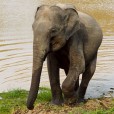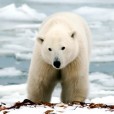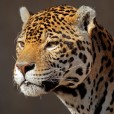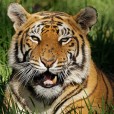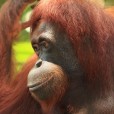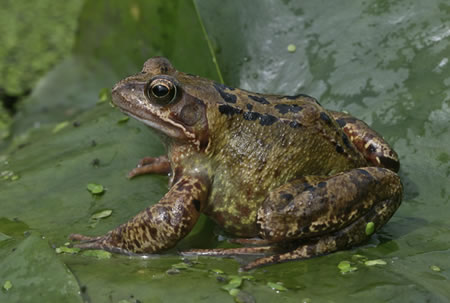
Adopt a Frog
Try our udopt'r to find the perfect animal adoption for you! >>
Frogs are one of the most diverse animals on the planet, with over 4,500 different types of species spread across 33 different families. That’s a lot of frogs! They have played a big part in human culture, and have been used in symbolism and religion since the dawn of time.
Unfortunately, frog populations have been on the decrease for many years, and almost 35% of all species are endangered or close to extinction. Even though there are so many of different types of them, the majority of them have the same characteristics. They have a round body, long hind legs for jumping around, no tail, and bulbous eyes on either side of their head. This gives them 360 degree vision, perfect to keep an eye out for predators and a delicious snack!
Their skin colour can vary, with some built for camouflage, and others all the colours of the rainbow. The earliest fossil of an early frog was seen to be dated at 265 million years ago, and they can be found across the globe in all manner of climates and landscapes. They usually lay their eggs in water, which in turn release tadpoles, which over time turn into frogs. The majority of frogs live off small insects and invertebrates.
The frog is a keystone of many of the world’s ecosystems, and are hunted by prey due to their ability to convert what they eat into body mass. They can be quite noisy animals, particularly during the mating season.
From fairytales of old to television personalities of more recent times, frogs have long played a role in human folklore. They have symbolised fertility and acted as omens of rain. They have been seen as repugnant for their looks and admired for their musical abilities. Whatever the view there is no mistaking that frogs are truly marvels of nature.
Did you know?
- As amphibians they have no hair, feathers, or surface scales and can breathe through thir skin as well as their lungs.
- They have a musical repertoire to rival that of birds in their richness and variety.
- Their limbs and feet can be mobilised for hopping, leaping, walking, swimming, digging, climbing and even gliding through the air.
- They possess remarkable skins , vividly coloured, smooth (or warty), permeable to moisture, and often loaded with toxins.
There are thousands of frog species, a number that increases each year with the discovery of new species. Yet despite this abundance of species frog populations around the globe are diminishing, and the list of causes for frog declines continues to grow. From habitat destruction and pollution to changing climate conditions, frogs with their double-life, part terrestrial and part aquatic, are potentially twice as vulnerable to these threats as most other vertebrates. In addition, they have permeable skins that absorb toxic chemicals, harmful doses of ultraviolet radiation, and other dangerous substances found in water, on land, or in the atmosphere.


